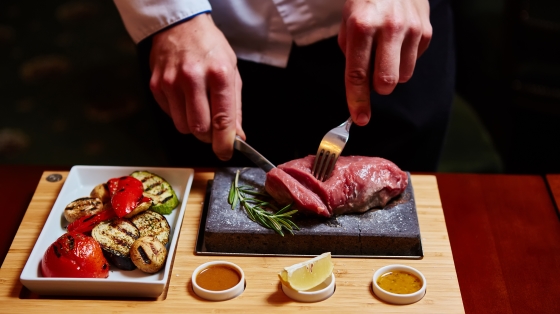Coping With Stepfamily Conflict: Conflict Resolution Techniques For Stepdads
Building Stronger Bonds And Creating Harmony In Blended Families

Conflict resolution is essential in any family setting but is necessary in blended families. Blended families bring new parenting styles, conflict with new step-siblings, and a whole host of other issues as kids and their stepparents learn how to communicate with each other.
As with any family, conflict is inevitable. But what makes the difference is how you deal with that conflict. The best stepdads know they need strong conflict resolution skills. So, let’s look at how you can use those skills to build strong stepfamily relationships.
Understanding Stepfamily Conflict
It’s normal for all families to have conflicts, but blended families have some shared sources of conflict that are common refrains among stepdads looking for help.
- Differences in parenting styles can lead to conflict in blended families as individuals may have contrasting approaches to discipline, rules, and expectations for their children.
- Competition for attention and affection can arise in blended families when children vie for the affection of their biological parent or compete with step-siblings for attention.
- Resentment or loyalty conflicts may occur when children feel torn between loyalty to their biological parent and acceptance of their stepparent, leading to resentment or guilt.
- Communication breakdowns create conflict when misunderstandings, misinterpretations, or ineffective communication strategies hinder resolving conflicts or expressing emotions.
Conflict can significantly disrupt family dynamics and relationships, increasing tension and decreasing trust. So, conflict resolution skills are critical!
Conflict Resolution Techniques for Stepdads
So, what can you do to resolve these tensions? Here are some techniques you can practice to reduce conflict and be a peacemaker in your blended family.
Active Listening
Active listening is the practice of fully concentrating and listening to understand, not to respond. You aren’t trying to come up with a rebuttal to what the other person is saying; you’re trying to understand where they’re coming from. Active listening is a way to show the other person that you care about their feelings.
Active listening fosters mutual respect and helps you communicate effectively. You can practice it in your non-conflict conversations to have it on hand when a conflict arises. Start by maintaining eye contact to show engagement and attentiveness.
Don’t check your phone or respond to distractions – the other person needs your attention. Ask open-ended questions to encourage them to express themselves fully and show empathy by acknowledging their feelings and perspectives without judgment.
Effective Communication
Clear, respectful communication is essential for maintaining healthy relationships within blended families. One strategy is to use “I” statements to express thoughts and feelings assertively yet empathetically.
For example, saying, “I feel overwhelmed when there’s a lot of noise in the house” instead of “You’re always so loud!” allows for ownership of emotions without placing blame. Practicing patience and understanding that each family member may have different communication styles and perspectives is critical to fostering good communication.
Collaborative Problem-Solving
Problem-solving doesn’t have to be a puzzle! If you and your family create a process that you can apply to different problems as they arise, it’s easier to solve them. The first step in a problem-solving process is identifying the issues at hand.
Encourage everyone to express their concerns openly and respectfully. Next, engage in brainstorming sessions where family members collectively generate potential solutions to the identified problems. Finally, work together as a family to agree on moving forward.
Setting Boundaries
It’s virtually impossible to maintain healthy family dynamics without boundaries. Boundaries aren’t a way to keep people out; they’re how you communicate your needs. Clear boundaries help define expectations, responsibilities, and limits, ultimately promoting respect and understanding among family members.
To enforce boundaries respectfully and consistently, you must communicate openly and directly about expectations and consequences. Consistency is vital, as enforcing boundaries inconsistently can lead to confusion and resentment.
Seeking Support
It’s important to remember that you aren’t alone and that there are lots of people out there who can help you resolve your conflicts. Seeking support from a therapist or counselor gives you a safe space to practice conflict resolution skills and to get help managing your emotions.
Support groups are also great places to learn from other stepparents who may have years of experience with conflicts just like yours. Check local community centers and online groups to find experienced mental health professionals and support groups that are open to you!
Conflict Resolution In Action
So, how might you put these skills to use in real-life situations? Imagine a scenario where a stepdad, John, finds himself in a challenging situation within his blended family. His stepson, Ethan, constantly pushes boundaries and challenges John’s authority, leading to frequent arguments and tension in the household.
Instead of reacting impulsively, John decides to implement the problem-solving process. First, he sits down with Ethan and his wife to openly discuss the issue. Next, they brainstorm to identify the underlying reasons for Ethan’s behavior and potential solutions.
Through active listening and empathy, John learns that Ethan struggles to adjust to the blended family dynamic and feels like he’s losing his connection with his biological father. With this understanding, the family develops strategies to strengthen their relationship and address Ethan’s insecurity. By consistently enforcing boundaries with patience and empathy, John helps Ethan feel heard and valued, creating a more supportive family environment.
Concluding Your Conflicts
Coping with stepfamily conflict requires implementing essential techniques such as active listening, setting clear boundaries, and practicing empathy to understand each family member’s perspective. Stepdads can foster a healthy family environment by working on conflict resolution strategies in their families.
By proactively addressing conflicts with patience and understanding, stepdads can strengthen relationships and create a supportive atmosphere where everyone feels heard and respected. Patience, empathy, and perseverance are essential virtues in navigating conflict within blended families, and a good stepdad always keeps those in mind when family conflicts arise.
For more information about creating a safe, supportive family environment, check out more helpful posts on the Support for Stepdads blog!






